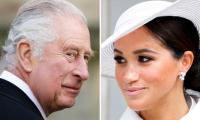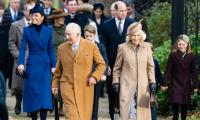Pakistan knows well how to deal with the US. What it does not know is how to deal with itself, particularly while dealing with the US. It has been a complex relationship all along. Pakistan benefitted immensely from the US friendship; it fought its proxy wars and, when needed, defied the superpower to guard its interests, as happened in the case of the nuclear programme and relations with China. The worst legacy of Pakistan’s relationship with the US are the self-inflicted wounds. Ironically, even as the nature of these relations is changing, the self-harm may continue.
Perceiving an existential threat from India, Pakistan became a close US ally soon after its creation. The embrace became tight during the height of the cold war in the 1960s. Under Ayub’s dictatorship Pakistan went through the green revolution and an unprecedented economic growth, thanks to American technical and financial support. American military hardware also enabled Pakistan to fight two wars.
However, during this period, Pakistan turned into an authoritarian state and lost its dream of turning into a modern democracy. While iron chains were the reward for politics, as Shorish Kashmiri put it, left-leaning scholars, intellectual and political activists had the worst deal. Their activities were restricted, their publications banned and many found their way to the notorious prison at Lahore’s historic fort. Hassan Nasir, the charismatic young secretary general of the banned Communist Party of Pakistan (CPP), was one such leader who was put in a cell in the Lahore Fort and brutally tortured till he died in 1960. The American-sponsored dictatorship in Pakistan also alienated its own people in East Pakistan, resulting in a military defeat and dismemberment of the country.
The best and worst period of Pakistan’s relations with the US started after the Soviet Union rolled its tanks into Afghanistan in 1979. The US found an eager partner in another military dictator, Ziaul Haq, aching to fight the CIA’s war in Afghanistan. The Afghan war gave Zia strength, legitimacy and much-needed military and economic assistance. It also enabled Pakistan to deal with a country that had promoted secessionism for three decades.
The Afghan jihad did not go wrong in Afghanistan; it went wrong in Pakistan. Remember, Afghans consider ‘their victory’ in this war a great national achievement and have even set up museums to celebrate their accomplishment. (Unfortunately, there are no statues of General Zia, Hamid Gul or Qazi Hussain Ahmad at these museums because Afghans fought and won on their own.)
While Zia promoted extremist ideologies through madressahs, textbooks and the official media, the Afghan war added small arms, narcotics and militancy to his witches’ brew. The lunatic fringe is not hard to find in any country; and, if we go by election results, Pakistan’s lunatic fringe is by no means larger than many stable and democratic countries. However, our extremists are well fed, well trained, well-armed and violent and that’s what makes them invincible. The Afghan war also marginalised Pakistan’s minorities and smaller Muslim denominations. It struck a huge blow to the diversity of the valley of Indus.
American policy towards Pakistan changed after the withdrawal of the Red Army from Afghanistan. Now that Pakistan’s services were not required, the US began to force it to abandon its nuclear programme and to sign NPT unilaterally. The Pressler Amendment, passed in 1985, was activated, disqualifying Pakistan from receiving American economic and military assistance. America banned the delivery of military equipment worth $368 million and 28 F-16 aircraft for which Pakistan had already paid. Even civil society assistance was discontinued as USAID left the country.
These sanctions were placed though Pakistan had contributed troops to the first Gulf War (August 2, 1990 – February 28, 1991). We can partly ascribe this foreign policy achievement to the genius of Gen Aslam Baig who served as Pakistan’s army chief after Zia’s death in a plane crash. While Pakistani forces were in the Gulf, he came up with a strategy of defiance to the US because, in his opinion, the world was taking a huge shift.
Last month, Gen Baig issued a press release quoting a speech he had delivered at the GHQ as the chief of army staff in 1988. The visionary warrior had stated: “The days of hegemony of superpowers are over and now we will witness the dawn of the supremacy of Islam. The triumph of democracy is in sight...The three countries – Pakistan, Iran and Afghanistan – are emerging free, strong and resilient, and are moving towards a common destiny, to unite together to form the bastion of power – the strategic depth of the Muslim World. It’s a vision which must be converted into a reality.”
During the post Afghan jihad period, our warriors returned from Afghanistan and embarked upon the mission to cleanse Pakistani society of all evils and turned their attention to Kashmir. The Jamaat-e-Islami, which had been at the forefront of the Afghan jihad, also played a major role in the Kashmir jihad. It coined a wonderful slogan to motivate its young followers: Ham jashn-e-Kabul mana chukay, ab aao chalo Kashmir chalain (We have celebrated our victory in Kabul, let’s go to Kashmir now).
When Nawaz Sharif was ousted by Musharraf in 1999, Pakistan’s sectarian terrorists were guests of the Taliban government in Kabul. Many jihadi organisations had become three-headed hydras operating simultaneously in Afghanistan, Pakistan and Kashmir. Nawaz Sharif had put the Taliban on notice for providing sanctuary to sectarian terrorists.
The period of US neglect and sanctions ended with the American invasion of Afghanistan in the wake of 9/11. Gen Musharraf is blamed for being too keen on supporting the US, jumping the gun and selling Pakistan too cheaply. According to Shuja Nawaz, Gen Musharraf made some assumption about US involvement in Afghanistan. He believed that it would be over soon and made an informal agreement without involving the Foreign Office.
Many of the accusations may be true, but Pakistan did not get a bad deal in exchange for extending support to the US in Afghanistan. The country came out of the crippling sanctions and its status as a nuclear power was recognised, it received generous support and it got integrated into the world community. It was also able to minimise Indian involvement in Afghanistan, at least for some time.
It was again the home front that was botched by Musharraf with terrible consequences for Pakistani society. MMA and the Difa-e-Pakistan Council were unleashed on Pakistan and the TTP was born out of the womb of the Afghan Taliban that had found a sanctuary in Fata. Musharraf, the so-called liberal, succeeded in harming Pakistani society far more than the saintly Ziaul Haq.
Now that our relationship with the US has entered the Trumpian era, I am not worried about performance of our diplomats. It is the consequences of anti-Americanism on Pakistani society that are giving me nightmares. Difa-e-Pakistan has already started stuttering as the defender of our children and is issuing ‘policy statements’ on behalf of the Ministry of Defence.
Iran may have failed where we succeeded – that is, turning into a nuclear despite the US pressure. However, our westerly neighbour has proved better in insulating its society from the impact of its foreign policy choices. Despite its anti-Americanism, American citizens find warm hospitality in Iran and can travel throughout the country without any fear. Though Iran has also been involved in Afghanistan since 1979 and provided sanctuary to Afghan refugees, it has been able to guard against terrorism and empowerment of non-state actors. Many people don’t know that Jews are a thriving community in the Islamic republic, with 20 working synagogues in Tehran alone.
As the way forward, let me quote again from the press release of Gen Baig: “The 45 million Pakhtuns living on both sides of the Durand Line are divided between Pakistan (60 percent) and Afghanistan (40 percent). During the last three decades, they have humbled and defeated the mightiest of the mighty of the world. Our Pakhtuns have supported Afghan Pakhtuns in their struggle for freedom, and will continue to do so till the Afghans win their freedom. What means do we have to divide and separate the Pakhtun nation?” Isn’t it time for Achakzai and Asfandyar to resign and let Gen Baig take charge of Pakhtun nationalism?
The writer is an anthropologist and development professional.
Email: zaighamkhan@yahoo.com
Twitter: @zaighamkhan
Many people believe that in future, AI will play an even more significant role in their lives
In April 2024, three Chinese and one Belarusian company were sanctioned for exporting missile-enabling technology to...
Pakistan has second highest neonatal mortality in world; in education sector, country's 26 million kids are out of...
Key actors in global power politics are US, China, Russia, European Union, and emerging powers such as India and Brazil
Maulana Fazl manages to bring together factions that historically stand opposed
NASA says August 2024 set new monthly temperature record, capping Earth’s hottest summer since 1880







